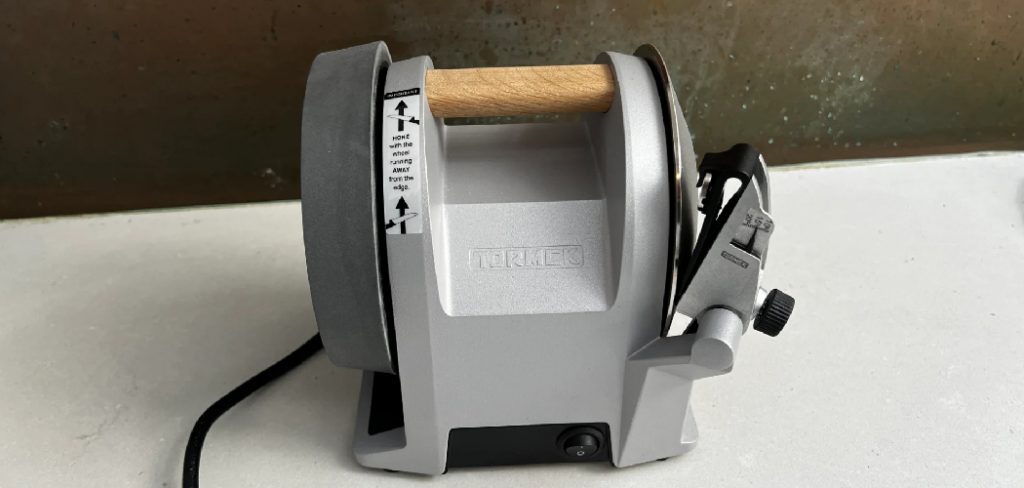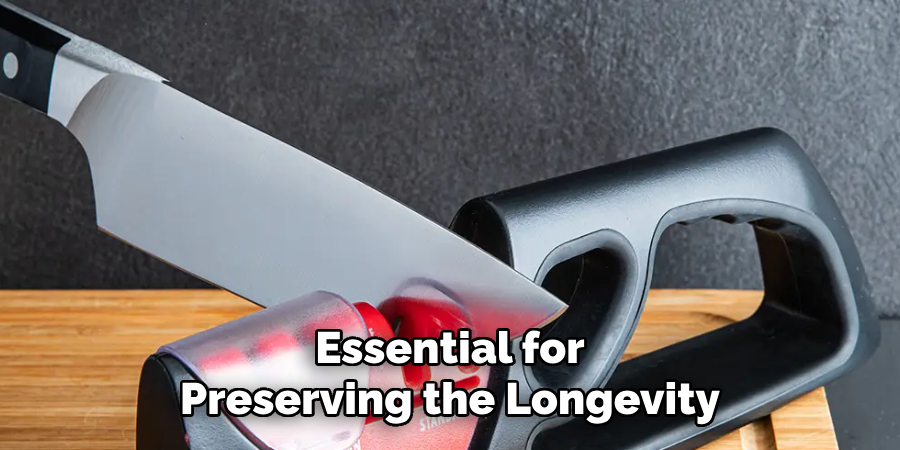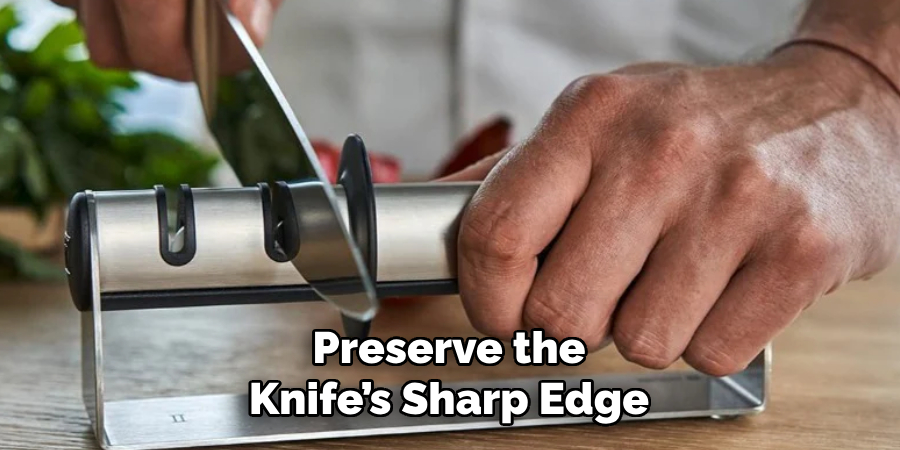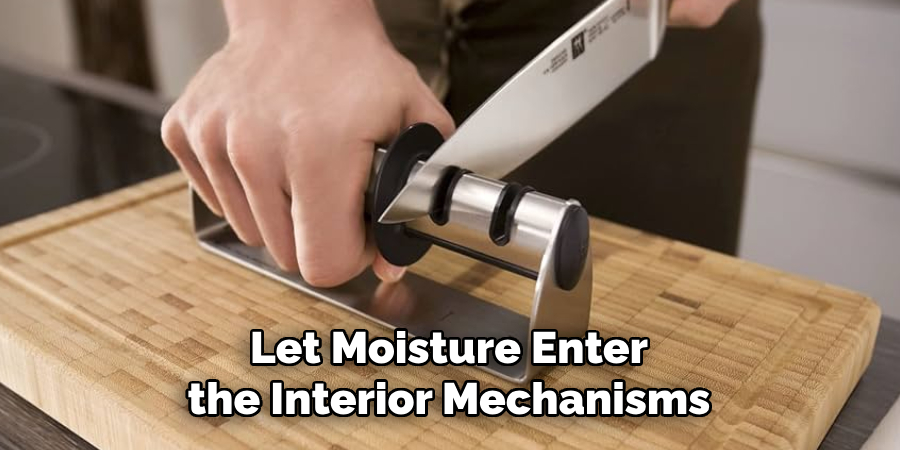Zwilling is a prestigious knife brand celebrated worldwide for its exceptional German craftsmanship and dedication to quality. With centuries of experience in forging high-performance knives, Zwilling has become synonymous with precision and durability. A vital aspect of maintaining such high-quality knives is regular sharpening, which ensures that each cut is smooth and efficient, preserving the blade’s sharp edge for optimum performance. This article aims to provide a comprehensive step-by-step guide on how to use zwilling knife sharpener effectively.

By understanding the sharpening process, you can prolong the lifespan of your Zwilling knives and enjoy better results in the kitchen. Whether you are a novice or a seasoned chef, learning how to use a Zwilling knife sharpener will enhance your culinary experience by keeping your tools in top condition.
Types of Zwilling Knife Sharpeners
Manual Pull-Through Sharpeners
Zwilling’s dual-stage manual sharpeners are designed with both coarse and fine slots to efficiently restore and refine the edge of your knives. The coarse slot is ideal for addressing dull or slightly damaged blades, while the fine slot is perfect for regular maintenance and refining the edge to razor sharpness. These sharpeners offer ease of use, making them suitable for most Zwilling knives. Their ergonomic design ensures a comfortable grip, allowing for effective sharpening with minimal effort, whether you’re a beginner or experienced in knife care.
Electric Sharpeners
For those seeking convenience, Zwilling offers electric sharpeners that provide hands-free sharpening with consistent results. These models have multiple slots for coarse and fine sharpening, simplifying the process and ensuring an even edge. Recommended for users who prioritize efficiency and ease, electric sharpeners make maintaining knife sharpness effortless, accommodating different levels of skill and expertise.
Honing Tools and Stones
In addition to sharpeners, Zwilling provides honing rods and whetstones to complement your knife maintenance routine. While sharpening actually removes material to form a new edge, honing realigns the blade, keeping it sharp between sharpening sessions. These tools are essential for preserving the longevity and performance of your knives, allowing for quick and precise maintenance.

Preparing Your Zwilling Knife and Sharpener
Inspecting the Blade
Before you begin sharpening, it’s crucial to inspect your knife’s blade. Look for any chips, dullness, or damage that might necessitate sharper attention. Ensuring the blade is in the right condition helps determine the correct sharpening approach. Additionally, ensure the knife is thoroughly clean and free of debris to prevent scratching or uneven sharpening. Taking a moment to check these details will ensure your knife fully benefits from the sharpening process.
Setting Up the Sharpener
Proper setup of your Zwilling knife sharpener is key to effective sharpening. Place the sharpener on a stable, flat surface to avoid unnecessary movement during use, which can lead to uneven edges. Take a moment to assess the condition of your knife to decide whether to start with the coarse or fine slot—coarse for damaged or very dull blades and fine for regular maintenance. This preparation step ensures a smoother and more controlled sharpening experience.
How to Use Zwilling Knife Sharpener: Step-by-Step Guide
Using the Coarse Slot
When dealing with very dull or damaged blades, start with the coarse slot. Hold the sharpener firmly on a stable surface to ensure safety and precision. Carefully insert the knife blade into the slot at the base, ensuring it aligns properly. Pull the knife through the slot in a steady, controlled motion, applying just light pressure throughout. Avoid pressing too hard, as this can damage both the blade and the sharpener. Repeat this process 3 to 5 times or until the edge of the blade is visibly restored and feels sharp to the touch. Ensuring consistency in the pressure and speed of each pull is key to achieving an even sharpening.
Using the Fine Slot
After restoring the edge with the coarse slot, proceed to the fine slot for regular maintenance or to fine-tune the blade’s edge. Like before, hold the sharpener securely and insert the knife blade into the fine slot. Again, pull the knife through with a steady motion, but this time, apply even lighter pressure. Repeating this process 2 to 4 times should suffice to achieve a refined, sharp edge. As you pull the blade through, ensure an equal number of strokes on each side of the blade to maintain balance. Following these steps will help preserve the knife’s sharp edge, providing optimal performance for daily culinary tasks.

Cleaning the Blade
After sharpening, clean the blade with a damp cloth to remove any metal shavings and debris that may have accumulated. Carefully wipe along the edge, taking precautions to avoid injury. Once the blade is free of any residue, dry it thoroughly before storing or using it to prevent moisture-related damage.
Using a Zwilling Electric Sharpener
Step-by-Step Instructions
To begin using a Zwilling electric sharpener, plug it in and turn it on. Identify the appropriate slot for your knife’s needs—opt for the coarse slot if the blade is notably dull or damaged, and select the fine slot for regular maintenance or a smoother edge. Gently insert the knife into the slot, ensuring it aligns correctly. Pull the knife through the slot, following the manufacturer’s guidance on speed and direction. Repeat this process as needed, alternating between the coarse and fine slots to achieve the desired sharpness.
Safety Tips
When utilizing an electric sharpener, it’s essential to ensure the knife is securely guided through the slots to prevent uneven sharpening. Maintain a steady hand to avoid any abrupt movements that could cause injury or damage to the blade. Avoid applying excessive pressure, which might harm the sharpener and the blade, potentially causing it to overheat or develop unnecessary wear. Always keep the sharpener on a stable and non-slip surface during use to enhance control and safety throughout the sharpening process. Following these tips will ensure effective and safe sharpening for optimal knife performance.
Maintaining Your Zwilling Knife Sharpener
Cleaning the Sharpener
Regular cleaning is essential to maintaining the performance of your Zwilling knife sharpener. For manual and electric sharpeners, remove any metal debris from the sharpening slots using a small, soft brush or cloth. This helps prevent buildup that could affect sharpening effectiveness. Wipe down the exterior of the sharpener with a damp cloth to remove dust or grime, taking care not to let moisture enter the interior mechanisms. Ensure slots are clear of any leftover residue for smooth operation during your next use.

Storage Tips
Proper storage of your Zwilling knife sharpener is crucial to prolong its life and maintain its efficiency. Store the sharpener in a dry, clean area away from moisture to prevent rust or material degradation. Avoid placing heavy objects on top of the sharpener, as this could impact its alignment and lead to uneven wear over time. By taking these precautions, you’ll ensure your sharpener remains in top condition for consistent knife maintenance.
Common Mistakes to Avoid
Over-Sharpening
Over-sharpening a knife is a common mistake that can significantly reduce the lifespan of your blade. Sharpening too frequently can wear down the blade’s edge, leading to thinning and weakening. It is crucial to sharpen only when necessary, not just out of habit. Warning signs that a knife doesn’t yet need sharpening include maintaining a clean slice and no noticeable dullness when making precision cuts. Observing these signs can prevent premature wear and tear on your knives.
Improper Technique
Another common error when sharpening knives is using improper technique. Applying too much pressure or pulling the blade through the sharpener at an inconsistent speed can damage the edge and lead to uneven sharpening. Following the manufacturer’s instructions, especially for Zwilling-specific tools, is essential to ensure effective and safe sharpening. Maintaining a light touch and consistent motion will help preserve the knife and maintain an optimal cutting edge.
Frequently Asked Questions
1. How Often Should I Sharpen My Knives with The Zwilling Knife Sharpener?
Knife sharpening frequency depends on usage. For kitchen knives used daily, sharpening every couple of months should suffice. However, always assess the knife’s performance; if it slices effortlessly without tearing, it likely doesn’t need sharpening yet.
2. Can I Use the Zwilling Knife Sharpener on Serrated Blades?
The Zwilling knife sharpener is designed for straight-edged knives. Attempting to sharpen serrated blades may result in damage to both the knife and the sharpener. It’s advisable to use specialized tools or seek professional sharpening for serrated knives.

3. Is It Safe to Wash the Zwilling Sharpener with Water?
Washing the sharpener with water is not recommended as it could damage it, particularly electric models. Instead, clean the exterior with a dry or slightly damp cloth and use a soft brush to remove debris from the slots.
4. Why Is My Knife Not Becoming Sharp After Using the Sharpener?
Several factors can affect sharpening results. Ensure you are using the proper slots and technique, applying consistent light pressure. If issues persist, check for excessive buildup in the sharpener or consult the manufacturer’s guidelines for troubleshooting tips.
Conclusion
In conclusion, understanding how to use zwilling knife sharpener effectively involves following key steps such as identifying the appropriate slot for sharpening and maintaining a light, consistent pressure during use. Regular maintenance is crucial; clean and store the sharpener properly to ensure its longevity. Proper technique not only preserves the sharpness of your knife but also prevents unnecessary wear and tear of the tool. Prioritizing knife care enhances kitchen performance, offering precise and safer cutting. With these practices, you’ll extend the life of both your knives and your Zwilling sharpener, ensuring optimal results for your culinary tasks.
Edmund Sumlin is a skilled author for Metal Fixes, bringing 6 years of expertise in crafting a wide range of metal fixtures. With a strong background in metalwork, Edmund’s knowledge spans various types of fixtures, from decorative pieces to functional hardware, blending precision with creativity. His passion for metalworking and design has made him a trusted resource in the industry.
Professional Focus:
- Expert in Metal Fixtures : Edmund aesthetic specializes in creating durable and innovative metal fixtures, offering both appeal and functionality. His work reflects a deep understanding of metalworking techniques and materials.
- Sustainability Advocate : He is dedicated to using sustainable practices, ensuring that every fixture is crafted with eco-friendly methods while maintaining high-quality standards.
In his writing for Metal Fixes, Edmund provides valuable insights into the latest trends, techniques, and practical advice for those passionate about metal fixtures, whether they are professionals or DIY enthusiasts. His focus on combining artistry with engineering helps others discover the true potential of metal in design.


